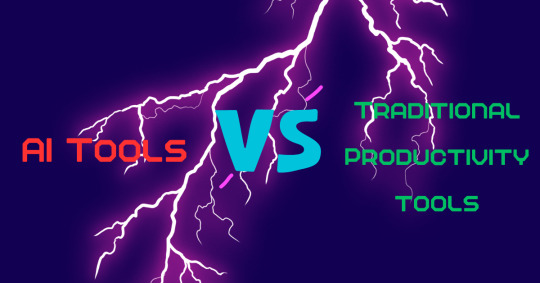#AutomationInWork
Explore tagged Tumblr posts
Text

Why the Future of Coworking Spaces Relies on Self-Service Technology
The coworking industry is booming, but with growth comes the challenge of managing a dynamic, fast-paced environment. The solution? Self-service technology.
Imagine walking into a coworking space where there’s no front desk queue—just a sleek self-service kiosk that lets you check in, book a meeting room or even make payments in seconds. No waiting, no hassle—just seamless efficiency.
With remote work and hybrid models on the rise, professionals expect instant access, flexibility and automation. Self-service kiosks enable coworking spaces to meet these demands while reducing operational costs. Instead of hiring additional staff, these kiosks handle member registrations, visitor check-ins, WiFi access and even printing services—all at the tap of a screen.
For space owners, this means streamlined operations, improved security and better resource management. For members, it translates to convenience, autonomy and an enhanced coworking experience.
In a world where time is money, self-service technology is not just an upgrade—it’s a necessity. The future of coworking spaces belongs to those who embrace automation, allowing members to focus on what truly matters—work, creativity and collaboration.
Are coworking spaces ready for this shift? Absolutely. The question is—are you?
#CoworkingSpaces#SelfServiceTechnology#FutureOfWork#WorkplaceInnovation#TechInCoworking#RemoteWork#FlexibleWorkspaces#DigitalTransformation#OfficeTrends#CollaborationSpaces#SmartWorkplaces#WorkplaceTechnology#EmployeeExperience#AgileWork#BusinessInnovation#TechSavvy#WorkspaceDesign#FutureOfCoworking#AutomationInWork#WorkplaceEfficiency#HybridWorkModel#StartupCulture#Entrepreneurship#CommunityBuilding#kiosk#selfservicekiosk#checkinkiosk#checkoutkiosk#paymentkiosk
0 notes
Text
AI Tools vs. Traditional Productivity Tools: A Comparative Analysis

Introduction
In 2024, the debate between AI productivity tools and traditional productivity tools has gained significant traction. As remote work and digital transformation continue to shape the workplace, understanding the advantages and limitations of both AI-driven and conventional tools is crucial for businesses and professionals. This blog provides a comparative analysis to help you make informed decisions about which tools best suit your productivity needs.
The Evolution of Productivity Tools
Traditional Productivity Tools
Traditional productivity tools, such as spreadsheets, calendars, and task managers, have been the backbone of workplace efficiency for decades. Tools like Microsoft Excel, Google Calendar, and Microsoft Project have helped organizations manage tasks, schedules, and projects with ease. These tools are reliable, easy to use, and have stood the test of time.
AI Productivity Tools
AI productivity tools represent the next generation of workplace efficiency. These tools leverage machine learning, natural language processing, and automation to enhance productivity. Examples include AI-based project management software, smart virtual assistants, and predictive analytics platforms. AI tools are designed to adapt to users' needs, provide real-time insights, and automate routine tasks.
Key Differences
Automation and Efficiency
AI Productivity Tools: AI tools excel in automation, significantly reducing manual efforts. They can automate repetitive tasks, schedule meetings, send reminders, and even analyze data to provide actionable insights. This automation leads to increased efficiency and allows employees to focus on high-value tasks.
Traditional Productivity Tools: While traditional tools offer some level of automation, they often require manual input and management. This can be time-consuming and may lead to errors, especially in complex projects.
Adaptability and Learning
AI Productivity Tools: AI tools continuously learn from user interactions and improve over time. They adapt to individual work styles, preferences, and needs, offering personalized experiences. This adaptability enhances productivity and ensures tools remain relevant and effective.
Traditional Productivity Tools: Traditional tools lack the ability to learn and adapt. They follow predefined functions and require users to adjust their workflows to fit the tool’s capabilities. This rigidity can limit productivity and innovation.
Data Analysis and Insights
AI Productivity Tools: AI tools excel in data analysis, providing real-time insights and predictions. They can analyze vast amounts of data, identify trends, and offer recommendations. This helps businesses make informed decisions and stay ahead of the competition.
Traditional Productivity Tools: While traditional tools can handle data analysis, they often require manual setup and analysis. This can be time-consuming and may not provide the same depth of insights as AI-powered tools.
Benefits and Limitations
AI Productivity Tools
Benefits:
Automation of routine tasks
Real-time insights and analytics
Personalized user experiences
Continuous learning and adaptation
Limitations:
Requires investment in technology and training
Potential concerns about data privacy and security
Traditional Productivity Tools
Benefits:
Familiarity and ease of use
Reliability and stability
Lower initial costs
Limitations:
Limited automation and adaptability
Manual data analysis and management
Conclusion
In the ongoing debate of AI productivity tools vs. traditional productivity tools, the choice ultimately depends on your specific needs and goals. AI productivity tools offer unparalleled automation, adaptability, and data insights, making them ideal for modern, dynamic work environments. On the other hand, traditional tools provide reliability and ease of use, which can be advantageous for straightforward tasks and projects.
For a competitive edge in 2024, embracing AI productivity tools can transform your workflow and drive innovation. Stay ahead of the curve by following our blog for more insights and updates on the latest productivity tools and trends.
#AIProductivityTools#TraditionalProductivityTools#RemoteWork2024#WorkplaceEfficiency#AIvsTraditionalTools#AutomationInWork#ProductivityComparison#AIInWorkplace#TaskManagement#DataAnalysis#AIandRemoteWork#FutureOfWork#DigitalTransformation#WorkplaceTechnology#ProductivityInsights
1 note
·
View note